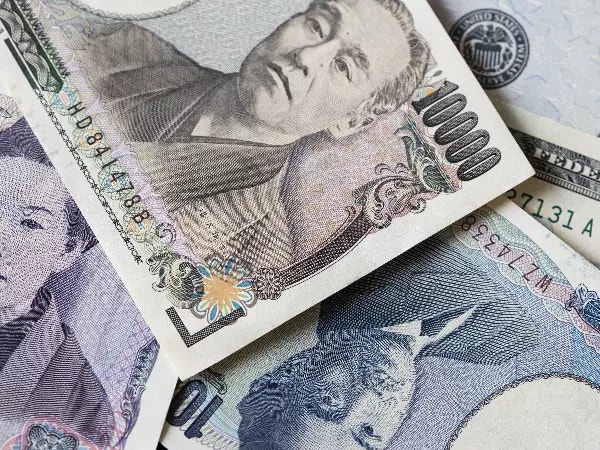Japanese yen soars as the Nikkei logs its worst day since 1987
Discover how the Japanese yen surged amidst heightened recession fears and the Nikkei's worst drop since 1987. Learn about the significant declines in US equities and the spike in market volatility.

Key Points
- Weak US employment data on Friday sparked fear as the unemployment rate rose to 4.3%
- The Nikkei dropped 12.4% Monday, its worst daily change since the 1987 "Black Monday" crash
- The S&P 500 fell 3% Monday, marking its worst day in nearly two years
- The Japanese yen has appreciated 6% against the dollar in the past week
- The S&P 500 Volatility Index (VIX) surged above 60.00, the highest level since the Pandemic
Japan's Nikkei Stock Average drops 12.4%
The Nikkei, Japan's counterpart to the S&P 500 or Dow Jones, experienced a dramatic 12.4% drop, marking its worst daily change since the 1987 "Black Monday" stock market crash. This steep decline follows a series of disappointing US economic data releases and escalating fears of a global recession, causing widespread investor anxiety and market volatility.
S&P 500 drops 3% on rising recession fear
The S&P 500 traded 3% lower on Monday as US equities continued to decline in response to July's unexpectedly weak employment data, which saw the US unemployment rate rise to 4.3%. The Nasdaq and Dow fell similarly, down 3.4% and 2.6% respectively. This significant drop signals mounting concerns over a potential economic downturn, further shaking investor confidence.
Japanese yen surges on flight to quality
The Japanese yen surged, with USD/JPY trading as low as 141.70 intraday, as investors flocked to the currency for its historic role as a "flight-to-quality" or "safe haven" asset. This trend highlights the yen's appeal during times of heightened economic uncertainty, in contrast to more risk-on currencies like the Australian dollar (AUD). USD/JPY has fallen ~1000 pips in the past week of trading, triggered by a surprise rate cut from the Bank of Japan (BoJ).
Stock market volatility hits highest levels since Pandemic
The S&P 500 Volatility Index (VIX) soared above 60.00 for the first time since the Pandemic, reflecting increased market fear. Equity options traders are pricing in a growing chance of a stock market crash, driving volatility to new peaks and signaling a turbulent period for traders and investors.
How to trade Japanese yen
- Open an account to get started, or practice on a demo account
- Choose your forex trading platform
- Open, monitor, and close positions on JPY pairs
Trading forex requires an account with a forex provider like tastyfx. Many traders also watch major forex pairs like EUR/USD and USD/JPY for potential opportunities based on economic events such as inflation releases or interest rate decisions. Economic events can produce more volatility for forex pairs, which can mean greater potential profits and losses as risks can increase at these times.
You can help develop your forex trading strategies using resources like tastyfx’s YouTube channel. Our curated playlists can help you stay up to date on current markets and understanding key terms. Once your strategy is developed, you can follow the above steps to opening an account and getting started trading forex.
Your profit or loss is calculated according to your full position size. Leverage will magnify both your profits and losses. It’s important to manage your risks carefully as losses can exceed your deposit. Ensure you understand the risks and benefits associated with trading leveraged products before you start trading with them. Trade using money you’re comfortable losing.
